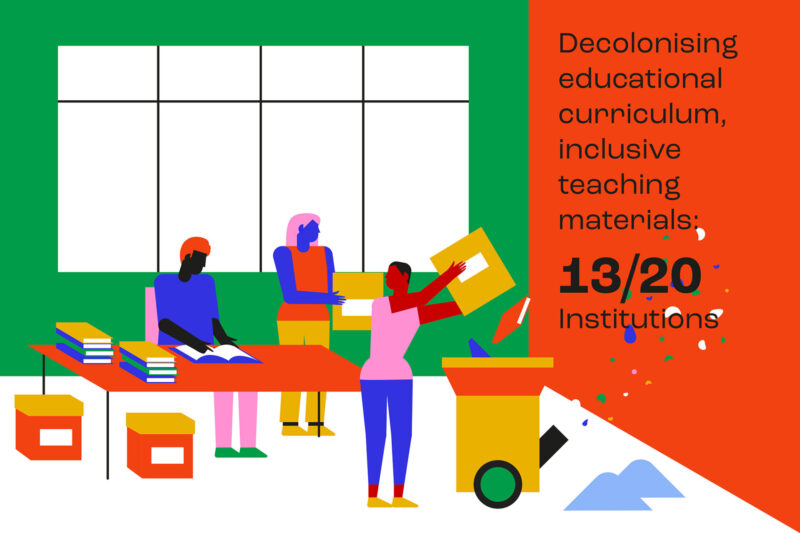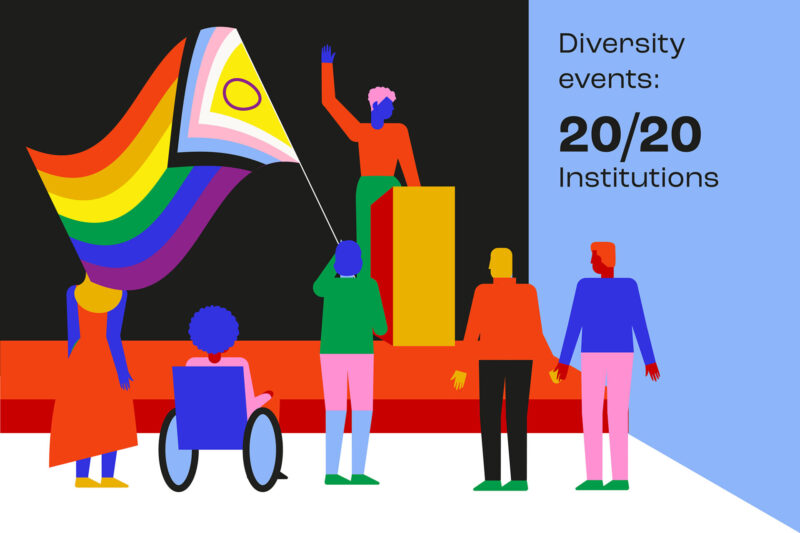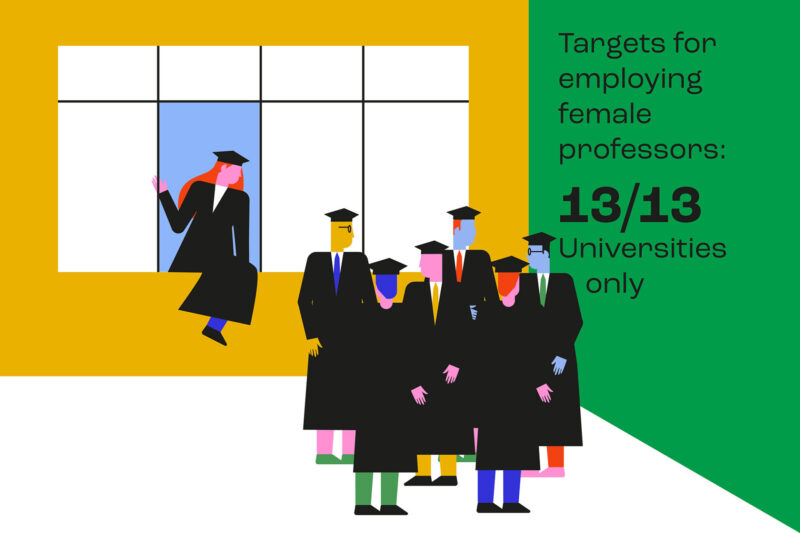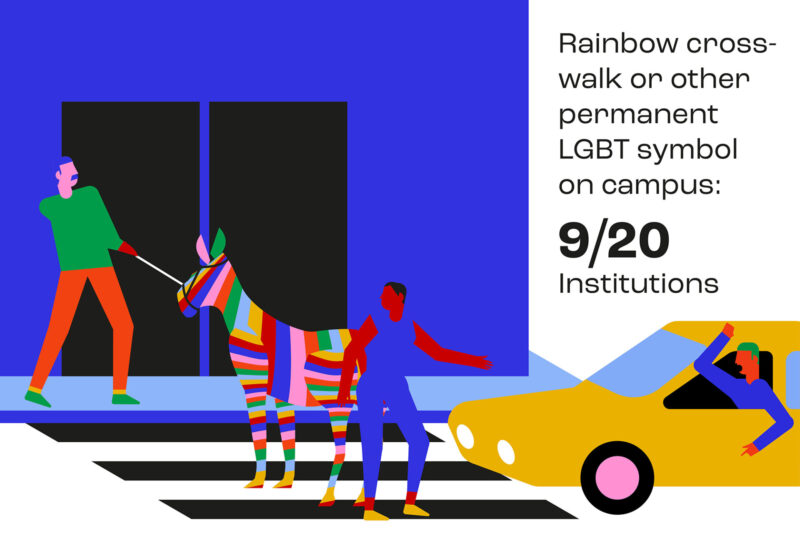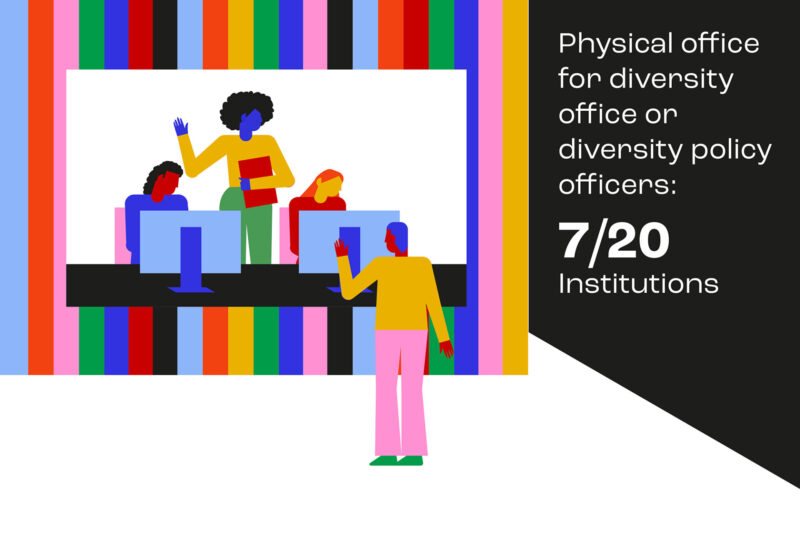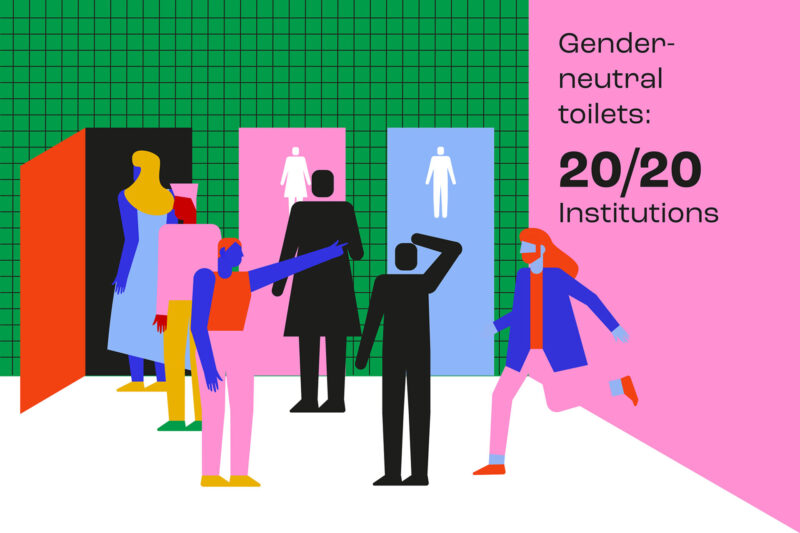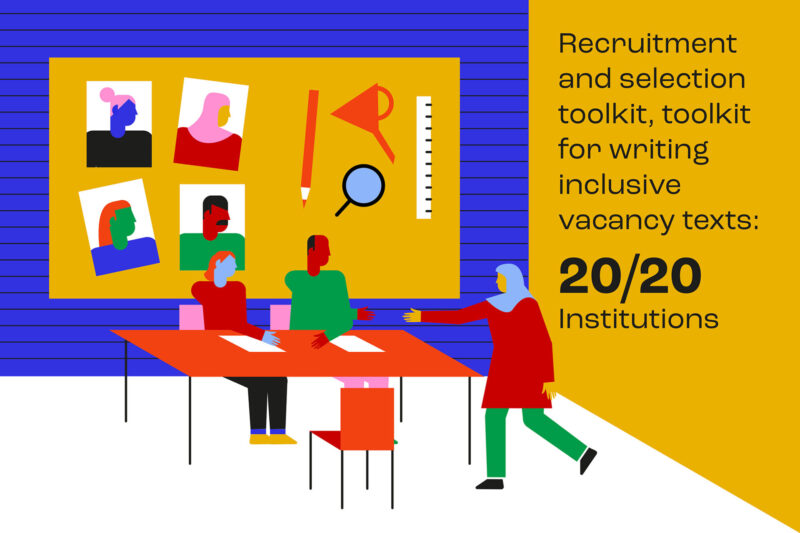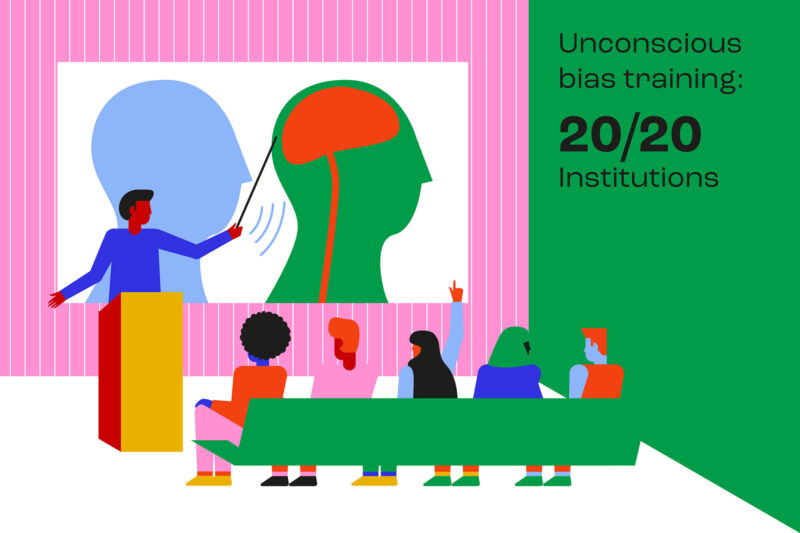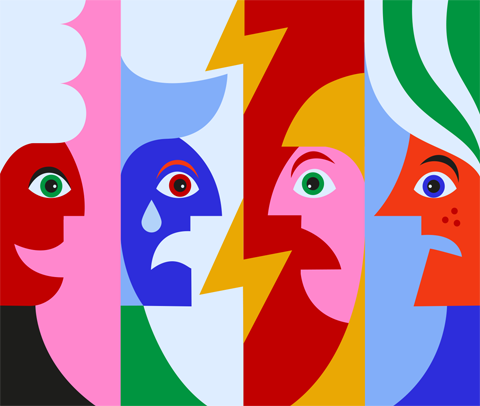
From decolonisation to pronouns
Controversies in the debate on diversity
The debate on diversity and inclusion in education isn’t new, although it seems to have a different name every decade. While earlier, the debate centered mainly on performance-related issues, such as more women at the top and recruiting more international students, the current themes are more specific and political in nature. That also means they’re more controversial, to both proponents and opponents of diversity policies.
Research done by UKrant and twenty other independent media outlets from higher education institutes showed that people get particularly worked up about anti-racism and gender identity.
The comment section below an UKrant article in which an interviewee was quoted as saying that ‘Groningen is really, really white’, for example, went completely off the rails. In this article, five people who belong to ethnic minorities discuss their experiences in the city. In total, the article received 630 angry comments, some of them furiously racist and xenophobic. In the end, UKrant decided to remove the comment section from the article.
At the University of Amsterdam (UvA), people actually threatened to kill the lecturers who told their board to not allow Jordan Peterson, a controversial Canadian psychologist, to be a guest speaker at an event.
How can educational institutes navigate this explosive landscape? Below are the four biggest controversies.
Controversy 1
Gender-neutral bathrooms
All the research universities and universities of applied sciences in the study have at least one gender-neutral bathroom that is accessible to anyone, including people who don’t identify as male or female.
Marco Strijks liaison officer of diversity and inclusion at the Saxion University of Applied Sciences, says it took him five years to get a gender-neutral bathroom in every building. One employee started protesting when the bathroom near his office was being renovated. Strijks: ‘He thought he’d have to go to a different bathroom farther away.’
One employee thought he’d have to go to a different bathroom farther away
Once the bathrooms had been converted, people started scratching the stickers off the doors. Some people weren’t comfortable with a universally accessible bathroom for religious reasons. And some women weren’t happy that other people were allowed to enter ‘their space’.
Saxion converted mainly women’s bathrooms into gender-neutral ones, for practical reasons. Looking back, Strijks would have done that differently. In the end, the university also converted men’s bathrooms.
However, not much has changed for people who refuse to use gender-neutral bathrooms, as all research universities and universities of applied sciences still have separate bathrooms for men and women.
Controversy 2
Decolonisation
The Black Lives Matter movement has made people more aware of the issue of institutionalised racism and how our colonial past still impacts our current way of thinking.
Curricula are often based on European or western perspectives. All research universities – except the ones in Tilburg and Wageningen – and the universities of applied sciences in Rotterdam and Amsterdam are therefore focusing on more inclusive teaching materials and decolonialising curricula by making room for non-western ideas and perspectives.
Educational expert Brian Godor called decolonialising the curriculum at the Erasmus University in Rotterdam ‘indoctrination’ in a piece in Erasmus Magazine. Godor says that the goal of education and research is learning about the world as it exists. Decolonialising the curriculum would lead to the ‘creation of a new world’. According to him, it would be detrimental to objectivity.
‘Tom and Maria buy a house’ was changed to ‘Tom and Tim buy a house’
But the diversity officers emphasise that the development of teaching materials is a bottom-up process: it’s the teachers themselves that want to make changes. They consider themselves to play a merely supporting role, for instance by offering a tool kit to lecturers that tells them how to be more critical of the literature they teach.
Chief diversity officer Gerry Wakker at the UG, who also teaches classical languages and literature, does so by providing context for the literature that can be considered Eurocentric. ‘I talk about how elitist white men dominate the field of classics and about how the far right will sometimes appropriate the literature. One thing we discussed was the use of classic symbols during the recent attack on the Capitol’, she says.
Not all diversity officers use the term ‘decolonisation’; instead, they talk about ‘making teaching materials inclusive’. This term is more widely applicable, as it also translates to sexual orientation, for example, says Maastricht University diversity officer Constance Sommerey. ‘The course property law changed an example from “Tom and Maria buy a house” to “Tom and Tim buy a house”.’
Controversy 3
White women
For years, women were the biggest target of educational institutes’ diversity policies, but this is changing. In Folia, student and university council member Hahae Son summarised UvA’s diversity memorandum as ‘helping white women get a job’.
But the introduction of ‘intersectional thinking’ means people now also take into account other differences, such as skin colour or socio-economic position, and how these impact each other.
UvA’s diversity memorandum: helping white women get a job
Universities of applied sciences in the west of the country especially struggle with this. People in positions of management, who are usually white, tend to hire people that look like them. They also have implicit biases about people that are different from them, say the diversity officers at the universities of applied sciences.
That’s why they’re organising unconscious bias training to raise awareness among managers – although these training sessions often aren’t mandatory. They also provide guidelines on how to write more inclusive job opening adverts and argue that it should be mandatory for those adverts to expressly say that an organisation strives to have a diverse work force.
Not everyone is happy with this, as evidenced by an opinion piece written by Jules van Binsbergen and published in newspaper NRC last September. The professor of financial economics at the University of Pennsylvania feels that diversity declarations such as these are a way of testing whether applicants have the ‘correct’ political affiliations. He warns that this endangers academic freedom, which he says is already an issue in the United States.
Controversy 4
Personal pronouns
‘I get a lot of complaints about how the IT systems handle gender and letterheads’, says Strijks with the Saxion University of Applied Sciences. ‘There’s no room for non-binary individuals, or they use the wrong pronouns.’
Quin Deen, who studies at Saxian, received a propaedeutic diploma that still included his dead name. And an increasing number of people identifies non-binary, no longer answering to he/him or she/her, but to they/their, or other pronouns of their choosing.
Being anticipatory of social changes is a step too far for us right now
The Erasmus University in Rotterdam succeeded in letting students change their pronouns, but other places mainly run into administrative issues.
Educational institutes do provide tutorials and guides on inclusive language, which helps people when they write job adverts. But there is still a disconnect between lecturers and students in daily life, Sommery with the Maastricht University says. ‘For most students, it’s completely normal, polite even, to tell someone your preferred pronouns when you meet them.’But there is resistance, as well. The Rotterdam University of Applied Sciences rejected a proposal from the participation council last year to use gender-neutral pronouns. ‘Being anticipatory of social changes is a step too far for us right now’, the board president said in Profielen.
Diversity and inclusion: the numbers
How do educational institutes put their diversity and inclusion goals into practice? Do students and staff see any of the intentions and memoranda reflected in reality? The numbers in the infographics below were sourced from thirteen research universities and seven universities of applied sciences. The eighth university of applied sciences, Avans, didn’t have sufficient data available.
This article is the result of studies done by twenty-one research university and university of applied sciences newspapers on diversity and inclusion in higher education.
The study was conducted at the following institutes: Fontys University of Applied Sciences, University of Groningen, VU University Amsterdam, Utrecht University, University of Twente, Avans University of Applied Sciences, Eindhoven University of Technology, Erasmus University Rotterdam, Rotterdam University of Applied Sciences, Radboud University Nijmegen, Utrecht University of Applied Sciences, Delft University of Technology, Arnhem Nijmegen University of Applied Sciences, Maastricht University, Amsterdam University of Applied Sciences, Hanze University of Applied Sciences, Tilburg University, Saxion University of Applied Sciences, University of Amsterdam, Wageningen University, Leiden University.
The news media at these institutes are part of the Kring van Hoofdredacteuren van hogeronderwijsmedia.
